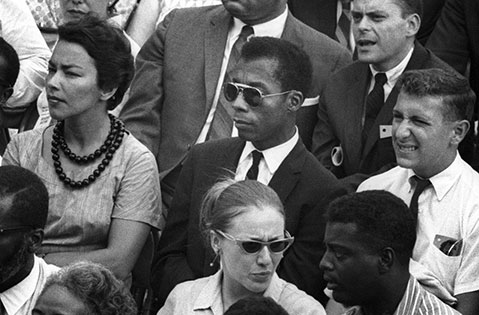I Am Not Your Negro
Director Raoul Peck

When veteran director Raoul Peck was given unlimited access to James Baldwin’s writings by the late author’s estate, the opportunity was almost too much to handle. With such wealth of great material, how best to present the essence of Baldwin’s contribution within the circumference of a single film?
Peck’s unorthodox choice was to “re-create” on film Remember This House, a book that Baldwin never finished. That decision has given us this marvelous film, which is a bracing and authoritative contemporary cinematic statement on race in America that makes the three black lives Baldwin’s abandoned text intended to treat — Medgar Evers, Martin Luther King, Jr., and Malcolm X — as much a part of the story as Baldwin himself.
Why try to re-create Remember This House?
This was an unprecedented project from the start. To have such unlimited access with no strings attached to the full body of work of an author is something unheard of and impossible in our film industry.
It’s ironic, even, that it would be an “unfinished” collection of notes titled ‘Remember This House’ that would provide me with the exceptional entry point into the film that I was looking for. The very idea of “re-creating” a book that was never written has the quality of a mystery novel for a filmmaker like me. And, historically and politically linking these major figures (ME, MLK, MX) like Baldwin did, is an incredible, dramatic move. Telling the story of America through these lives? Genial.
I am fascinated by the idea that the film combines Baldwin’s quest with the director’s emotional syntax. Could you say more about that?
I could not have been able to make a similar film with any other author. I could with Baldwin, because not only did he have a major role in my upbringing, but he literally helped shape my brain. So that when in need, I could even “second guess” and “feel” what he would have used or done while writing his book.
I felt totally “immersed” in James Baldwin’s world, rhythm, emotion, pain, conflict, anger. This sort of “intimacy” is rare. And it was further cemented by my growing up in this same American “mythology,” although I confronted it much later than he did. But I perfectly “felt” what he meant every step of the way.
The decision to make changes to the images — shifting B+W images to color, and taking current images and using them in B+W — how does that reflect the subjective “remixing” aesthetic of the film?
From the start, I knew that this film would be about “images.” Fabricated images, contradictory images, painful images, propaganda images, images of the past, images of the present, in all shapes, forms and qualities. The same could actually be said for the music. It’s like the story of America was being told through text, images, sounds, and music. So, I had to also find the proper form (and aesthetic) that would match this approach in a non-didactic manner. “Playing” with the colors and B&W images became then a way to meld past and present and press the fact that not much (besides the technology) had changed and that there was a straight link between Selma and Ferguson.



